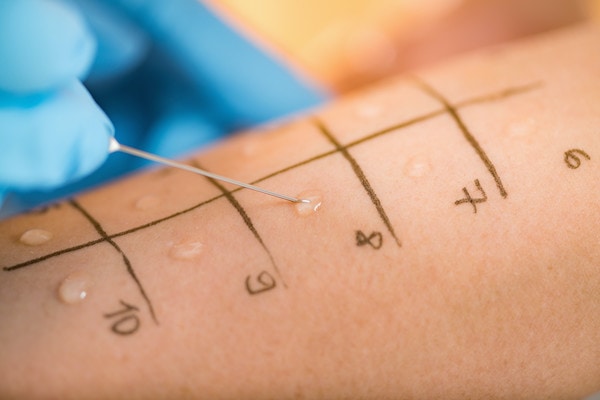Codex CAC/GL 87 Guidelines for Soy and Milk Protein Detection
The Codex Alimentarius Commission's Guideline for the Determination of Allergenic Proteins, known as Codex CAC/GL 87, provides critical guidelines for detecting soy and milk protein allergens in food products. This guideline is pivotal for ensuring that food safety standards are met globally, particularly for those with dietary restrictions due to allergies.
The Codex CAC/GL 87 framework outlines a harmonized approach to the detection of soy and milk proteins using various analytical methods. It aims to ensure consistency in allergen testing across different countries, which is essential for maintaining consumer trust and safety. The standard covers multiple aspects including sample preparation, method selection, and interpretation of results.
One key component of Codex CAC/GL 87 is the use of immunochemical methods such as Enzyme-Linked Immunosorbent Assays (ELISAs) for protein quantification. These methods are highly sensitive and specific, making them ideal for detecting even trace amounts of allergenic proteins in food products.
Another important aspect addressed by the guideline is the validation process required for any method used to detect allergens. This includes demonstrating accuracy, precision, limit of detection, and comparability with reference methods as defined by international standards such as ISO 15216-1:2017.
The Codex CAC/GL 87 also emphasizes the importance of traceability in testing procedures, ensuring that results are reliable and repeatable. This is achieved through standardized protocols for sample preparation and handling, which minimize variability between different laboratories performing similar tests.
For quality managers and compliance officers, adhering to these guidelines ensures that products meet regulatory requirements set forth by organizations like the World Health Organization (WHO) and Food and Agriculture Organization of the United Nations (FAO). Compliance with Codex CAC/GL 87 helps businesses avoid potential legal issues and maintains consumer confidence in their product safety.
- Ensures consistency across international borders
- Facilitates easier exportation of food products
- Reduces the risk of recalls due to non-compliance with allergen labeling laws
- Supports R&D efforts in developing safer and more transparent food production processes
In summary, compliance with Codex CAC/GL 87 is not just a regulatory requirement but also a strategic business decision that supports long-term sustainability and growth. By implementing this guideline, companies can ensure they are meeting the highest standards of food safety and quality.
Eurolab Advantages
At Eurolab, we pride ourselves on providing comprehensive testing services that align with global best practices. Our expertise in Codex CAC/GL 87 guidelines for soy and milk protein detection sets us apart from other laboratories. With a team of highly qualified scientists and state-of-the-art facilities, we offer reliable and accurate results every time.
- Comprehensive range of services tailored to your specific needs
- Advanced instrumentation and equipment for precise analysis
- Dedicated customer support throughout the testing process
- A commitment to continuous improvement in our methodologies
- Regular training sessions for our staff to stay updated on new developments
We understand that time is crucial in food and feed testing, which is why we aim to provide quick turnaround times while maintaining the highest standards of accuracy. Our clients can trust Eurolab to deliver consistent, reliable results that meet both national and international regulatory requirements.
Why Choose This Test
- Regulatory Compliance: Ensures adherence to Codex CAC/GL 87 standards for allergen detection, meeting global food safety regulations.
- Consumer Trust: Demonstrates a commitment to maintaining the highest standards of product quality and safety.
- Competitive Edge: Positions your business as a leader in food safety and compliance.
- Avoids Legal Issues: Reduces the risk of recalls, fines, and other legal repercussions associated with non-compliance.
- Better Product Transparency: Provides clear information about ingredient content to consumers, fostering trust and loyalty.
- Improved R&D Opportunities: Offers insights into potential allergen sources that can guide product development and innovation.
Selecting this test allows you to gain a competitive advantage by ensuring your products are safe and compliant with international standards. This not only protects your brand reputation but also enhances customer satisfaction and loyalty.
International Acceptance and Recognition
The Codex Alimentarius Commission's Guideline for the Determination of Allergenic Proteins, CAC/GL 87, has gained widespread recognition and acceptance across various countries. This international standard is endorsed by numerous regulatory bodies worldwide, including the Food and Agriculture Organization (FAO) and the World Health Organization (WHO).
By aligning with Codex CAC/GL 87 guidelines, food manufacturers can ensure their products meet global standards for allergen detection. This harmonization of methods across different regions simplifies compliance for exporters and importers alike.
The use of standardized protocols in Codex CAC/GL 87 ensures that results are comparable globally, facilitating easier trade between countries. For instance, laboratories from Europe, North America, Asia, and other parts of the world can rely on consistent methodologies when performing allergen tests. This consistency reduces discrepancies and fosters trust among trading partners.
Furthermore, compliance with these guidelines enhances a company's reputation in both domestic and international markets. It shows that your business takes food safety seriously and is committed to providing safe products for consumers worldwide.





